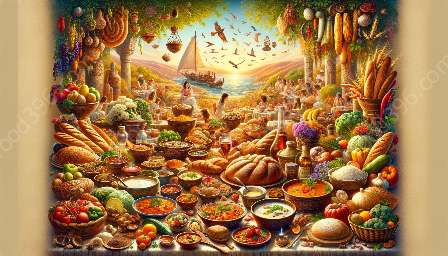Brazilian cuisine is a captivating blend of regional flavors, deeply rooted in the country's diverse food culture and history. From the Amazon rainforest to the coastal plains, the melting pot of influences has shaped a tapestry of culinary delights that showcase the richness of Brazilian gastronomy.
Regional Cuisine
The regional diversity of Brazil's landscape has contributed to a wide array of unique and vibrant culinary traditions. Each region boasts its own distinct flavors, ingredients, and cooking techniques, offering a kaleidoscope of tastes and textures that capture the essence of Brazil.
1. Northern Cuisine: Amazonian Delights
The northern region of Brazil, particularly the Amazon rainforest, is a treasure trove of exotic flavors and indigenous ingredients. From savory grilled pirarucu fish to creamy tacacá soup infused with tucupi, the Amazonian cuisine showcases the bounty of the forest and rivers.
- Amazonian Dishes:
- Moqueca de Camarão (Shrimp Moqueca)
- Açaí Bowl
- Pato no Tucupi (Duck in Tucupi Sauce)
2. Northeastern Cuisine: Culinary Heritage of Bahia
The northeastern region, particularly Bahia, is a melting pot of African, indigenous, and Portuguese culinary influences. The vibrant colors and bold flavors of Bahian cuisine reflect the fusion of cultural heritage, featuring spicy stews, tropical fruits, and delectable seafood dishes.
- Bahian Delicacies:
- Moqueca Baiana (Bahian Fish Stew)
- Caruru
- Acarajé
3. Southeastern Cuisine: Flavors of Rio de Janeiro and São Paulo
The southeastern region, encompassing Rio de Janeiro and São Paulo, boasts a dynamic food scene influenced by European, African, and indigenous culinary traditions. From feijoada, Brazil's national dish, to the delectable churrasco barbecue, the southeastern cuisine offers a delightful fusion of flavors and textures.
- Southeastern Fare:
- Feijoada (Black Bean Stew)
- Pão de Queijo (Cheese Bread)
- Churrasco (Brazilian Barbecue)
Food Culture and History
The culinary landscape of Brazil is intricately woven with the country's rich history and diverse cultural influences. The fusion of indigenous, African, Portuguese, and immigrant traditions has shaped the evolution of Brazilian cuisine, creating a culinary narrative that reflects the country's heritage.
Lingering Legacy of Indigenous Cuisine
The indigenous communities of Brazil have contributed a wealth of ingredients and culinary techniques to the country's food culture. From manioc (or cassava) to exotic fruits, the indigenous influence is evident in the diverse flavors and ingredients that form the foundation of Brazilian cuisine.
African Heritage and Vibrant Flavors
The African culinary heritage in Brazil, particularly in the northeastern region, has left an indelible mark on the country's gastronomy. The intense and spicy flavors, combined with ingredients such as palm oil and coconut, showcase the fusion of African traditions with local ingredients, creating a unique and vibrant culinary identity.
Portuguese Influence and Culinary Traditions
The Portuguese colonization of Brazil introduced a wealth of ingredients, cooking techniques, and dishes that have become integral to Brazilian cuisine. The use of seafood, spices, and the tradition of bacalhau (salted cod) reflect the enduring influence of Portugal on the country's culinary tapestry.
Immigrant Contributions and Culinary Fusion
The influx of immigrants from Europe, Asia, and the Middle East has further enriched Brazilian cuisine, contributing diverse flavors and culinary techniques. Italian pasta, Japanese sushi, and Middle Eastern kibbeh are just a few examples of the fusion of immigrant traditions with local ingredients, creating a vibrant and eclectic culinary mosaic.
The vibrant and diverse flavors of Brazilian cuisine are a testament to the country's rich regional traditions, varied food culture, and layered history. From the rainforest to the coast, each bite tells a story of heritage and innovation, inviting culinary explorers on a captivating journey through the vibrant tapestry of Brazil's gastronomic landscape.

